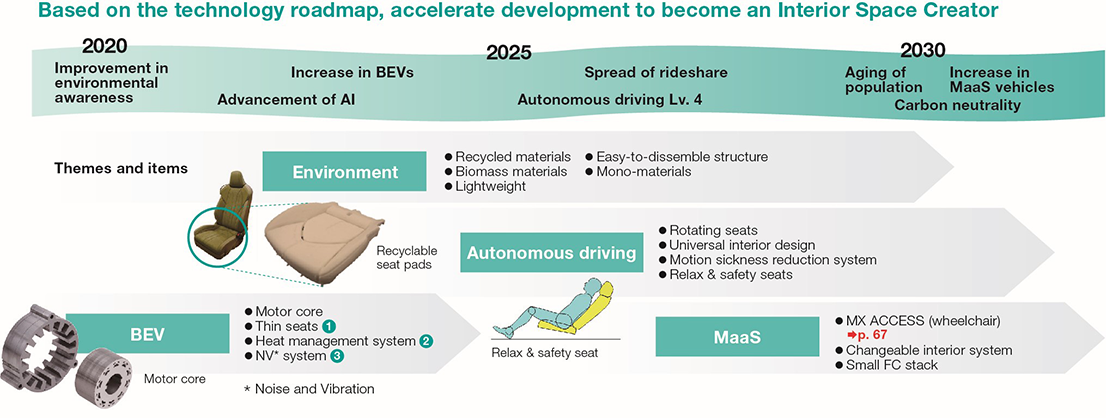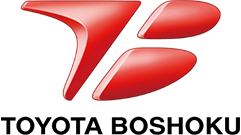Creating new businesses ahead of MaaS market expansion
MaaS market forecast to see rapid growth
Have you ever seen the term “MaaS” in the news or elsewhere? It is an acronym for Mobility as a Service. MaaS aims to improve transport efficiency by seamlessly connecting all modes of transportation other than private cars, including public transport and mobility services such as ride-sharing. In doing so, state-of-the-art ICT (Information and Communication Technology) is utilized to integrate and optimize the reservation, guidance, and payment processes for all modes of transportation.
In 2021, the MaaS market in Japan is estimated to have been worth 490.59 billion yen for a total of 12 markets, comprising 10 areas of mobility services, the MaaS platform market, and the MaaS apps market. The market size is projected to be 1,718.8 billion yen in 2030, and 2,360.8 billion yen in 2035. Although certain aspects are difficult to monetize, some analysis has shown that MaaS will be indispensable for urban and regional development in Japan, and is expected to be actively utilized in the future.
Announcement of the MX221, an autonomous driving vehicle with an adjustable interior space to meet a variety of needs
The Toyota Boshoku group is also steadily preparing for the advent of the MaaS market. In 2023, we exhibited the MX221, a ride-sharing vehicle designed for Level 4 autonomous driving, at the CES technology trade show in Las Vegas. Based on the concept of Diversatility*1, this product proposes a variable interior space that can be adapted to a variety of users in a single vehicle. Six Toyota Group companies collaborated on this project with four objectives in mind.
The first is to address the economic structures and systems that will be changed by MaaS. In the future, MaaS service providers are expected to become new customers in addition to OEMs*2 and end users, so we added a new perspective to unearth future requirements.
The second is to expand business opportunities. For example, we intend to expand our growth area through new product development and value provision, including the business of product replacement through interior modularization.
The third is to provide new value of experience on a sustained basis. We will develop new product processes, production methods, and products through upgrade to HWSW*3. Modularized seat structures, new value-added interiors, and over-the-air (OTA) software updates are examples.
The fourth is to enhance our corporate image. We will raise the image of the Toyota Boshoku group as a global leader in proposing innovative automobile interior spaces and as a company that contributes to solving social problems.
Through the MX221 project, we aim to become an Interior Space Creator capable of planning and proposing the entire automobile interior space.

Potential for new business
The MX221 concept was inspired by aircraft, where the cabin space is updated every six years. We believe that a significant increase in utilization rates will create business opportunities to regularly update the interior space of automobiles as well.
The initial interior and seats are shipped to the OEM, which then delivers them to the service provider along with the vehicle. Subsequently, we envisage dealing directly with the service provider when updating the space. This could significantly increase the potential revenue per vehicle. To realize this new business, the Toyota Boshoku group will acquire the ability to propose the entire mobility space through expansion of our capabilities.
- ※1 A term coined by combining the words “Diversity” and “Versatility.”
- ※2 Toyota Motor Corporation and other automakers
- ※3 A standard transaction message format in the small computer industry.
Related information
Technology roadmap
Our vision is to “create tomorrow’s automobile interior spaces that will inspire our customers the world over,” and we are formulating a technology roadmap to realize this vision.
This technology roadmap details our offered products, which meet the needs of customers and the demands of society, and sets out a development direction that connects the company’s vision to the products, and to their constituent components and elemental technologies.
Having defined the three spaces we must realize and the two essential technologies that support them, we are creating the required products and technology items, and are promoting development in line with customer needs and trends.
This approach enables us to provide our customers with products that meet market needs in a timely manner.


 Media site to convey the Toyota Boshoku group vision for the future and initiatives
Media site to convey the Toyota Boshoku group vision for the future and initiatives



